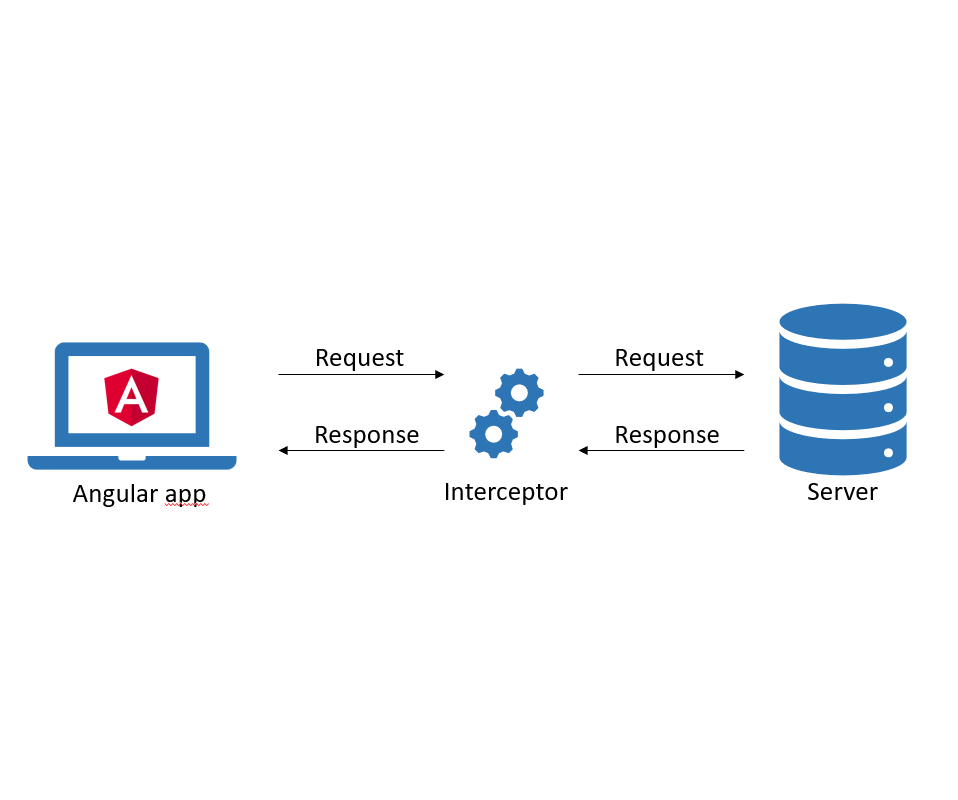The world of frontend and backend development continues to evolve rapidly. In 2025, JavaScript frameworks still dominate the web development landscape—but with some surprises, consolidations, and new trends reshaping developers’ choices. In this article, we’ll explore the most used JavaScript frameworks in 2025, analyzing their features, ideal use cases, and the reasons behind their popularity.
1. React: Still on Top, with Significant Updates
- Popularity: #1 (still the undisputed king)
- Maintained by: Meta (Facebook)
Why is it still the most used?
- React Server Components (RSC): Now fully matured, they allow part of the logic to run on the server, improving performance and reducing client-side bundle size.
- Integration with Next.js 15: The most popular React framework now features improved state management, automatic image optimization, and native support for hybrid rendering (SSR + CSR).
- Vast ecosystem: Libraries like TanStack Router (formerly React Router), Zustand, and React Query continue to dominate.
- Enterprise adoption: Companies like Netflix, Airbnb, and Shopify still invest heavily in React for scalable applications.
What’s new in 2025
- React Compiler: An experimental compiler that automatically optimizes re-renders, reducing the need for useMemo and useCallback.
- Better WebAssembly support: Easier integration with WASM modules for high-performance apps.
- React Forget: A new API for automatic memoization handling, simplifying the development of high-performance components.
Ideal use cases
✅ Complex SPAs (Single Page Applications)
✅ Projects requiring high reactivity and reusable components
✅ Sites with a lot of dynamic state (e.g., dashboards, social networks, e-commerce)
2. Angular: A Comeback with Signals and Standalone Components
- Popularity: #2 (rapid growth thanks to Angular 17+)
- Maintained by: Google
Why is it making a comeback?
- Signals as the new standard: Introduced in 2023, Signals are now the default state management mechanism, making Angular more reactive and simpler to use.
- Standalone Components: No more need for NgModules, simplifying project structures.
- Improved performance: The new Ivy compiler and hybrid hydration have cut load times by 30% compared to 2023.
- Enterprise adoption: Companies like Google, Microsoft, and IBM are migrating legacy projects to Angular for its stability and scalability.
What’s new in 2025
- Angular DevTools 2.0: Advanced debugging tools with time-travel debugging for Signals.
- Native Web Components support: Angular can now be used within micro-frontends without conflicts.
- Deferred Views: Lazy-loading not just of components, but template sections too—further improving performance.
Ideal use cases
✅ Long-term maintainable enterprise apps
✅ Projects requiring strong type safety (thanks to TypeScript)
✅ Modular, scalable systems (e.g., CRMs, ERPs, SaaS platforms)
3. Vue.js: Growing in Simplicity and Flexibility
- Popularity: #3 (stable, with a very active community)
- Maintained by: Evan You and the Vue.js team
Why is it still beloved?
- Intuitive syntax: The Composition API is now the standard, but the Options API remains available for simpler projects.
- Lightweight: Vue 4 is even lighter—only 12 KB in production.
- Solid ecosystem: Pinia (state management), Vite (build tool), and Nuxt 4 (full-stack framework) make it a complete choice.
- Strong adoption in Asia and Europe: Many startups and mid-sized companies choose Vue for its gentle learning curve.
What’s new in 2025
- Vue Macros: A macro system to reduce boilerplate code (e.g., automatic defineProps).
- Improved TypeScript integration: Native support for generics and complex types.
- Vue Use: An official collection of reactive utilities to manage side effects (e.g., localStorage, intersectionObserver).
Ideal use cases
✅ Mid-size projects where development speed is crucial
✅ Apps needing flexibility without complexity
✅ Static or hybrid sites (thanks to Nuxt.js)
4. Svelte: The Dark Horse Still Surprising Everyone
- Popularity: #4 (fast rising, especially among early adopters)
- Maintained by: Svelte Core Team
Why is it gaining ground?
- No Virtual DOM: Svelte compiles components into pure JavaScript, resulting in better performance than React and Vue.
- Minimal syntax: .svelte files combine HTML, CSS, and JS in one file, reducing complexity.
- Automatic reactivity: No need for useState or ref; just assign a variable to make it reactive.
- Big players testing it: The New York Times, Apple, and Spotify are experimenting with Svelte.
What’s new in 2025
- SvelteKit 2.0: The full-stack framework now supports improved server-side rendering and edge functions.
- Reduced runtime: Svelte 5 has nearly eliminated the runtime, producing even more optimized code.
- Rust/WASM integration: Developers can write components in Rust and compile them into WebAssembly.
Ideal use cases
✅ Applications where performance is critical (e.g. games, real-time dashboards)
✅ Projects aiming for minimal bundles
✅ Developers who prefer less boilerplate and higher productivity
5. SolidJS: The React Competitor That's Gaining Momentum
- Popularity: #5 (rapidly growing, especially among performance enthusiasts)
- Maintained by: Ryan Carniato and the community
Why is it becoming popular?
- Fine-grained reactivity: Like Svelte, it avoids the Virtual DOM and uses a dependency tracking system that’s extremely fast.
- React-like syntax: Easy for React developers to transition to SolidJS.
- Lightweight: Only 6 KB in production.
- JSX support: Familiar syntax for React developers.
What’s new in 2025
- SolidStart 1.0: The full-stack framework now supports server components and streaming SSR.
- Better Vite integration: Even faster builds.
- SolidJS for Mobile: Experiments with building mobile apps using Capacitor.
Ideal use cases
✅ High-performance apps where React is too heavy.
✅ Projects that want maximum reactivity without a Virtual DOM.
✅ Developers looking for a lightweight but powerful alternative to React.
6. Qwik: The Framework Betting on Extreme Lazy Loading
- Popularity: #6 (niche, but growing for specific use cases)
- Maintained by: Builder.io
What makes it unique?
- Resumability: Qwik loads only the necessary code at startup, minimizing load times.
- No hydration: Unlike React or Vue, Qwik doesn’t need to hydrate the DOM, boosting performance.
- SEO friendly: Being server-first, it’s ideal for content-heavy sites.
What’s new in 2025
- Qwik City 2.0: The routing framework now supports nested layouts and optimized data fetching.
- Integration with PartyKit: Enables real-time apps with built-in WebSocket support.
- Better CMS support: Plugins for WordPress, Strapi, and Sanity.
Ideal use cases
✅ Content-heavy sites (blogs, e-commerce, news portals).
✅ Apps where time-to-interactive must be minimized.
✅ Projects looking to avoid traditional hydration.
7. Astro: The Framework for Static and Hybrid Sites
- Popularity: #7 (leader in static and hybrid site development)
- Maintained by: Astro Technology Company
Why is it so popular?
- “Less JavaScript” philosophy: Astro loads only the JavaScript you need, reducing the bundle size.
- Multi-framework support: You can use React, Vue, Svelte within Astro.
- SEO optimized: Being static-first makes it ideal for content-rich websites.
- Easy to adopt: Perfect for blogs, documentation, and landing pages.
What’s new in 2025
- Astro DB: An integrated database to manage dynamic content without an external backend.
- View Transitions API: Smooth page transitions.
- Better headless CMS support: Native integrations with Contentful, Prismic, and Directus.
Ideal use cases
✅ Static sites (blogs, portfolios, docs)
✅ Landing pages with interactive sections
✅ Hybrid projects (static + dynamic)
8. Node.js (Express/NestJS): Still the King of the Backend
- Popularity: #1 in backend development
- Maintained by: Node.js Foundation
Why does it still dominate?
- Massive ecosystem: Thanks to npm and yarn, it has the largest library pool.
- Improved performance: The new V8 engine (v12.0) brings significant optimizations.
- Mature frameworks: Express (for lightweight APIs) and NestJS (for enterprise apps) remain popular choices.
What’s new in 2025
- Node.js with WebAssembly: Native support for WASI (WebAssembly System Interface).
- NestJS 11: Features enhanced microservices and Kafka integration.
- Fastify 5.0: Increasingly used for high-performance APIs
Ideal use cases
✅ REST/GraphQL APIs
✅ Microservices
✅ Real-time apps (e.g., with Socket.io)
9. Deno: The Growing Alternative to Node.js
- Popularity: Rising, especially for new projects
- Maintained by: Deno Land
Why is it gaining ground?
- Built-in security: Runs code in a sandbox, lowering risks.
- Native TypeScript support: No need to compile TS to JS.
- Integrated tooling: Includes a bundler, test runner, and formatter.
- Node.js compatibility: Now supports most npm libraries.
What’s new in 2025
- Deno KV 2.0: A built-in key-value database for serverless apps.
- Deno Deploy: Edge-native hosting platform for Deno apps.
- Better WebGPU integration: Ideal for graphics and parallel computing apps.
Ideal use cases
✅ Secure scripting (CLI tools, automation)
✅ Serverless applications
✅ Projects avoiding Node.js for security reasons
10. Bun: The New Runtime Aiming to Replace Node.js and Deno
- Popularity: Rapidly growing, especially among early adopters
- Maintained by: Jarred Sumner and the community
Why is it getting attention?
- Extremely fast: 3–4x faster than Node.js in many benchmarks.
- Node.js compatible: Runs most Node.js code without changes.
- Integrated tooling: Comes with a bundler, test runner, and npm-compatible package manager.
- Web APIs support: Can also be used on the frontend (similar to Deno).
What’s new in 2025
- Bun Shell: A JavaScript-based Bash replacement.
- Bun SQLite: Integrated SQLite database for lightweight apps.
- Improved WebAssembly support: Runs WASM modules with native-like performance.
Ideal use cases
✅ High-performance backend applications
✅ Fast scripting and automation
✅ Projects exploring modern runtimes
General Trends in 2025
- Less JavaScript, more compilation: Frameworks like Svelte, SolidJS, and Qwik reduce the JS sent to browsers.
- Edge Computing: More frameworks now support edge functions (e.g., Vercel Edge, Cloudflare Workers).
- WebAssembly: Becoming mainstream for high-performance apps.
- Full-Stack Frameworks: Tools like Next.js, Nuxt, SvelteKit, and Remix unify frontend and backend.
- Strong typing: TypeScript is now practically mandatory in all professional projects.
Which Framework to Choose in 2025?
Need
Recommended Framework
Enterprise applications
Angular, NestJS
Complex SPA
React, SolidJS
Static sites
Astro, Next.js (Static Mode)
Extreme performance
Svelte, SolidJS, Bun
Scalable backend
NestJS, Bun
Lightweight & fast projects
Vue, Svelte
Edge Computing
Qwik, Deno Deploy
Microservices
NestJS, Fastify
Conclusion
2025 is shaping up to be a year of transition and innovation for JavaScript frameworks. While React, Angular, and Vue continue to lead, newcomers like Svelte, SolidJS, and Bun are gaining ground thanks to superior performance and innovative approaches.
Framework choice always depends on project needs—but one thing is clear: web development has never been this fast, flexible, and powerful.



